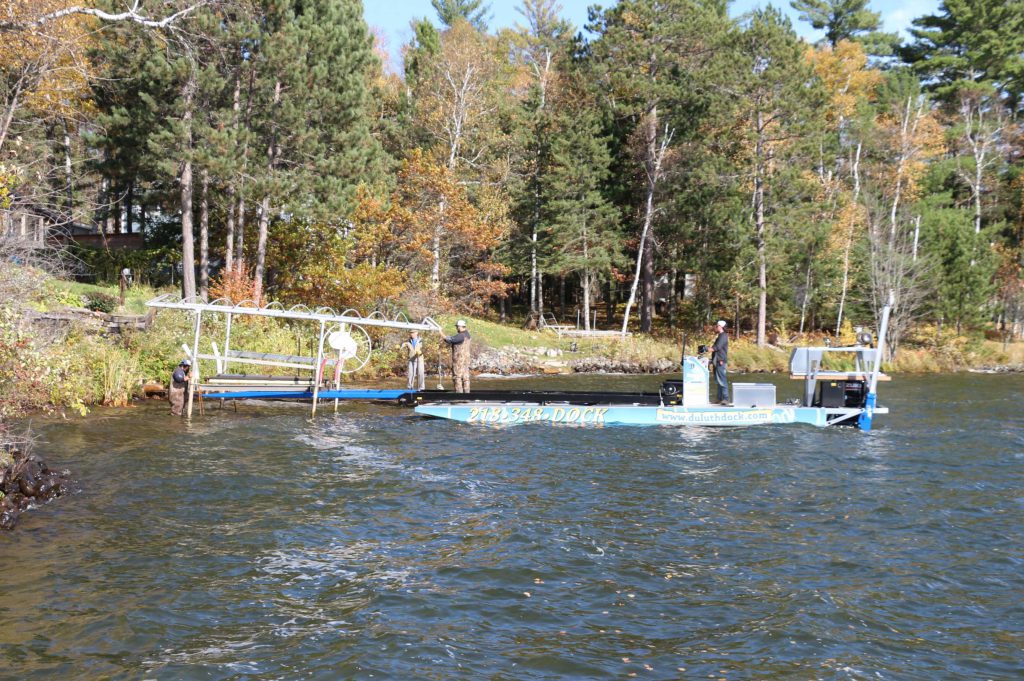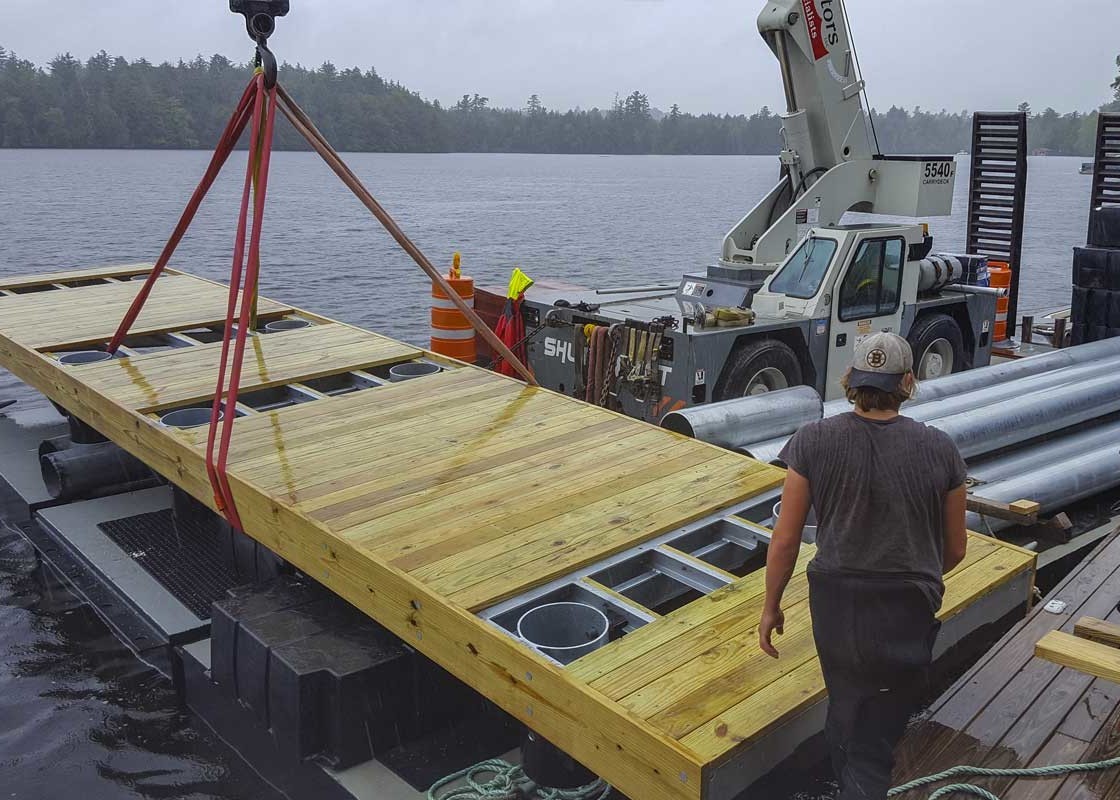Top Indicators You Need Expert Dock Repairs This Season
Wiki Article
Effective Dock Repair Work Techniques: Ensuring Structural Integrity
Making certain the architectural integrity of anchors via reliable repair work methods is extremely important for the long life and safety and security of marine centers. This entails a multi-faceted approach beginning with comprehensive inspections making use of innovative innovations like finder tools and remotely operated vehicles (ROVs) to spot both visible and hid damages. Consequently, choosing the right repair products, such as composite products and corrosion-resistant alloys, is critical for longevity. Architectural support methods, consisting of the execution of cross-bracing systems and load-distribution plates, play a vital duty in mitigating anxiety points. The relevance of these techniques becomes apparent when exploring advanced repair work techniques and preventative maintenance methods.Assessing Dock Damages
Examining dock damages is an essential primary step in ensuring the structural honesty and security of any type of docking center. This first assessment includes a comprehensive evaluation to identify both noticeable and covert problems. Trick elements to examine include the dock's foundation, pilings, decking, and equipment. Each component must be looked at for signs of wear, rot, rust, or various other types of degradation that could compromise the architectural stability.Architectural engineers or certified examiners generally do these evaluations utilizing specialized tools and techniques. Underwater evaluations might employ sonar equipment or remotely operated lorries (ROVs) to identify immersed damage. Over water, aesthetic evaluations are matched by making use of wetness meters and other analysis tools to uncover underlying concerns not right away noticeable to the naked eye.

Picking Repair Service Products
Selecting the suitable repair service products is a critical action in the dock repair procedure, one that straight affects the long life and performance of the repaired structure. Material selection should be driven by aspects such as environmental problems, load-bearing requirements, and compatibility with existing dock components. For instance, timber is a standard choice for docks because of its all-natural durability and aesthetic appeal. Nonetheless, choosing the best kind of wood, such as pressure-treated lumber or naturally rot-resistant varieties like cedar or teak, is vital to withstand aquatic settings.In addition to timber, composite materials are increasingly prominent due to their durability and reduced maintenance demands. Composites, commonly made from a blend of plastic and wood fibers, offer superb resistance to rot, pests, and UV damage. For metal anchors, choosing corrosion-resistant alloys such as galvanized steel or marine-grade aluminum is necessary to stop rust and make sure architectural integrity in saline water problems.
Epoxy resins and marine-grade sealers are essential for fixing splits and sealing joints, offering a water-proof obstacle and improving the dock's total toughness. By carefully choosing top notch products, dock fixings can accomplish lasting outcomes, thus securing versus future destruction and ensuring risk-free, trustworthy use.
Structural Reinforcement Methods
Efficient architectural reinforcement methods are critical in ensuring the stability and longevity of dock repair work. One fundamental method involves using steel or composite reinforcement bars (rebar) within concrete structures. Rebar offers additional tensile toughness, preventing cracks and distributing loads more evenly. This method is particularly reliable for docks subjected to heavy lots or severe ecological problems.An additional necessary strategy is the application of fiber-reinforced polymers (FRP) These products use high strength-to-weight ratios and excellent resistance to corrosion, making them excellent for reinforcing concrete or wood anchors. FRP can be applied in sheets or strips and bound with epoxy resins to boost architectural integrity.
Supporting and anchoring systems additionally play a crucial function in structural support. Cross-bracing, making use of metal or wooden beams, can neutralize lateral pressures, reducing persuading and movement. Securing systems, such as helical piers or driven stacks, provide a steady structure by transferring lots to deeper, more secure dirt layers.
Finally, the integration of load-distribution plates can assist disperse weight much more equally across the dock's surface area, reducing local stress factors. These techniques jointly ensure that docks continue to be risk-free and durable, qualified of holding up against the rigors of their functional environment.
Advanced Repair Techniques

Another advanced technique involves underwater welding, which allows for repair services to be carried out without the requirement to dewater the location. This method is especially beneficial for addressing structural issues in immersed dock parts, ensuring very little disruption to procedures. Boosted welding techniques, combined with robot systems, provide precision and dependability, thus extending the life-span of the dock.
In addition, cathodic security systems are executed pop over here to prevent corrosion in metal dock structures. By using sacrificial anodes or impressed existing systems, these methods efficiently click for more mitigate the electrochemical procedures that cause material damage.
Last but not least, advanced surveillance modern technologies, such as structural health tracking (SHM) systems, offer real-time information on the condition of dock frameworks. These systems make it possible for aggressive maintenance and prompt interventions, eventually making certain the long-lasting structural integrity of the dock.
Maintenance and Prevention
Maintenance and avoidance are essential principles that underpin the long life and safety and security of dock frameworks. Regular inspections are extremely important, permitting early discovery of damage, possible weaknesses, and environmental impacts. A proactive technique, including regular checks for rust, rot, and structural changes, reduces pricey repair services and lengthens the dock's operational life.Safety nets need to include using protective finishes to steel components to guard versus corrosion and making use of treated wood to withstand degeneration. Additionally, making certain appropriate water drainage and ventilation can avoid water build-up, which is an usual reason of structural degradation. Integrating high quality materials and adhering to supplier standards during building and repair phases likewise play essential functions in enhancing toughness.

Training employees in dock maintenance best practices guarantees consistent application of safety nets. Leveraging technical advancements, such as drones for inspections and sensing units for real-time surveillance, can even more improve maintenance initiatives. By focusing on maintenance and avoidance, dock owners can ensure architectural stability, operational security, and affordable management over the dock's lifespan.
Verdict
In final thought, keeping the architectural stability of aquatic centers requires comprehensive dock repair work methods. his comment is here Advanced fixing strategies, coupled with regular maintenance methods, make sure the dock continues to be secure and functional under diverse ecological conditions.Making certain the architectural integrity of docks through effective repair work methods is extremely important for the longevity and safety of marine facilities.Picking the ideal repair products is a pivotal action in the dock restoration procedure, one that straight affects the durability and performance of the repaired structure.Effective architectural support methods are important in making certain the security and durability of dock repairs. By prioritizing maintenance and avoidance, dock proprietors can make sure structural stability, operational safety and security, and cost-efficient monitoring over the dock's life expectancy.
In conclusion, maintaining the architectural honesty of marine facilities necessitates thorough dock fixing techniques.
Report this wiki page